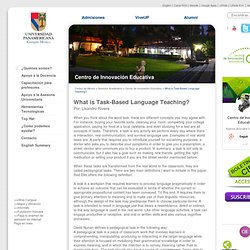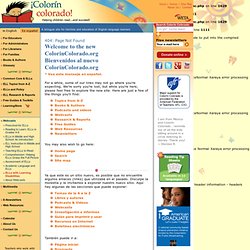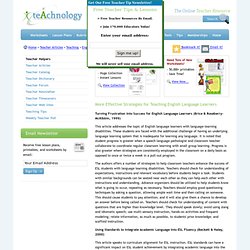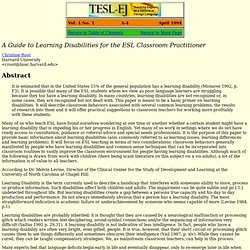

Task-based speaking. What is Task-Based Language Teaching? What is Task-Based Language Teaching?

Por: Lisandro Rivera When you think about the word task, there are different concepts you may agree with. For instance, buying your favorite soda, cleaning your room, completing your college application, paying for food at a local cafeteria, and even studying for a test are all concepts of tasks. Therefore, a task is any activity we perform every day where there is interaction, real communication, and survival language use. Examples of real world tasks are: A party that requires you to introduce yourself for socializing purposes, a doctor who asks you to describe your symptoms in order to give you a prescription, a street vendor who convinces you to buy a product. When these tasks are transformed from the real world to the classroom, they are called pedagogical tasks. Rod Ellis offers the following definition: David Nunan defines a pedagogical task in the following way: Rehearsal Tasks and Activation Tasks Work with three other students. Task-based speaking.
A Guide to Learning Disabilities for the ESL Classroom Practitioner. Home > ELL Topics from A to Z > A Guide to Learning Disabilities for the ESL Classroom Practitioner By: Christine Root (1994) In many countries, learning disabilities are not recognized or, in some cases, they are recognized but not dealt with.

This paper is meant to be a basic primer on learning disabilities. It will describe classroom behaviors associated with several common learning problems, the results of research into them and it will offer practical suggestions to classroom teachers for working more profitably with these students. Many of us who teach ESL have found ourselves wondering at one time or another whether a certain student might have a learning disability that is impeding his or her progress in English. According to Dr. "Learning Disability is the term currently used to describe a handicap that interferes with someone's ability to store, process or produce information. Categories of Difficulty Classroom behaviors associated with word-retrieval difficulties: Brown, H.
English Language Learners with Learning Disabilities. Warning: mkdir() [function.mkdir]: No space left on device in /var/www/colorincolorado/xaradodb/adodb.inc.php on line 1629 Notice: Undefined index: xarTpl_themeDir in /var/www/colorincolorado/includes/xarTemplate.php on line 211 Warning: mkdir() [function.mkdir]: No space left on device in /var/www/colorincolorado/xaradodb/adodb.inc.php on line 1629.

More Effective Strategies for Teaching English Language Learners. Lesson Plans and Teacher Timesavers - Huge Collection - Instant Lessons View Collection Need Tons of New Worksheets?

- 50,000+ printables - Save Time! View Now... More Effective Strategies for Teaching English Language Learners Turning Frustration into Success for English Language Learners (Brice & Roseberry-McKibbin, 1999) This article addresses the topic of English language learners with language-learning disabilities. The authors offers a number of strategies to help classroom teachers enhance the success of ESL students with language learning disabilities. Using Standards to Integrate Academic Language into ESL Fluency (Beckett & Haley, 2000) This article speaks to curriculum alignment for ESL instruction. The TESOL (Teachers of English to Speakers of Other Languages) standards were developed to provide teachers with scope and sequence of the language skills that ESL students need for success in our nation's classrooms. 1) to use English to communicate in social settings,
Guide to Learning Disabilities for the ESL Classroom Practitioner. A Guide to Learning Disabilities for the ESL Classroom Practitioner Christine Root Harvard University <croot@husc.harvard.edu> Abstract It is estimated that in the United States 15% of the general population has a learning disability (Monarez 1992, p.

F3). It is possible that many of the ESL students whom we view as poor language learners are struggling because they too have a learning disability. Many of us who teach ESL have found ourselves wondering at one time or another whether a certain student might have a learning disability that is impeding his or her progress in English. According to Dr. Learning Disability is the term currently used to describe a handicap that interferes with someones ability to store, process or produce information. Dyslexia is the term that is usually used to cover a very broad range of learning disabilities which involve language processing deficits. 1.
A. an appearance of persistent verbal reticence b. a diminishing of verbal spontaneity 2. 3. 4. Testing ESL Students with Learning Disabilities. Testing any child requires preparation, and this is especially true when testing English as a Second Language (ESL) students suspected of having learning disabilities.

Working with ESL Parents - Establish Reliable Communication with ESL Parents The first and most important step in the testing and evaluation process is establishing reliable communication between ESL parents and the school staff working with the ESL child. Communication is important to the assessment and to ensure ESL parents are well informed about the process and their rights as parents of ESL children who may have learning disabilities. ESL parent involvement in the evaluation ensures: The ESL parents can provide an accurate developmental and social history. Express 8.02 - Strategies for Teaching English Learners and Students with Learning Disabilities. Strategies for Teaching English Learners and Students with Learning Disabilities John Carr As a researcher, I have always been interested in learning about the instructional strategies that work for students with learning disabilities, for English language learners, and for students in general.

I began my search with Classroom Instruction That Works (Marzano, Pickering, & Pollock, 2001), a synthesis of research on strategies for students in general, and Classroom Instruction That Works with English Learners (Hill & Flynn, 2006). From these two sources, I went on to look for other effective strategies for students with learning disabilities that fit the following criteria: The strategy should not be entirely new so that teachers don't feel overloaded.
Based on these criteria, I discovered six instructional strategies that research suggests are effective for native English speakers and English learners (Carr, Sexton, & Lagunoff, 2007; Carr et al., 2009). Six Strategies Scenario References.